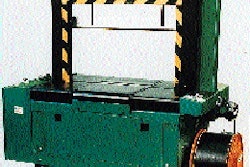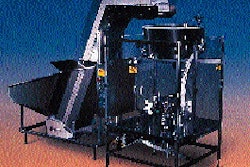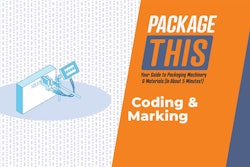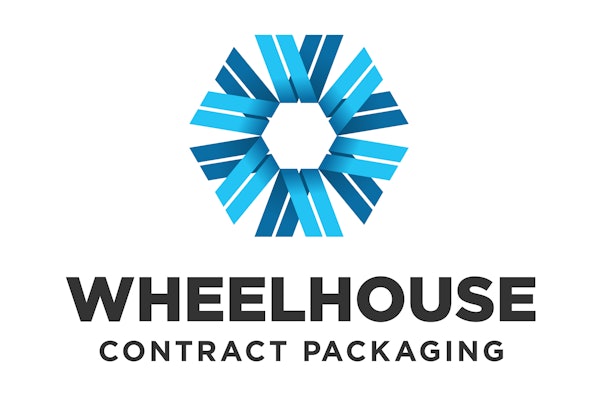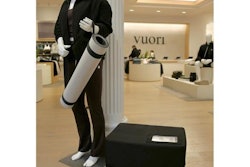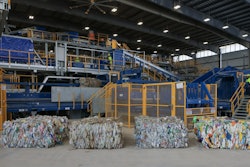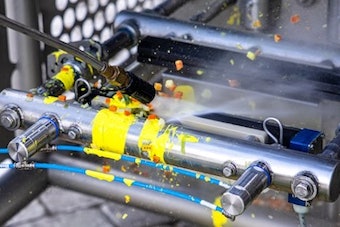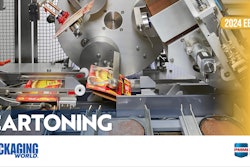Complying with specifications set by large customers can be a costly burden on manpower and the budget. But when Sandoz Pharmaceuticals Corp. installed eight automatic printer/applicators and four label printers to comply with the bar code requirements of its wholesaler customers, it found the math rather pleasing. "This started out as a marketing-driven project, done more for our customers than for us," recounts John Adamusik, senior engineer, packaging development. But because the installation reduced the number of operators required to apply the labels, it saved about $325ꯠ a year. Six operators were freed up across four packaging lines. The shipping department saves an additional $100ꯠ per year by scanning the new labels instead of keystroking in the information. The scans result in more accurate orders, and that means fewer costly corrections. Running since April '95, the new equipment was installed in a solid-dose prescription drug packaging operation at Sandoz's sprawling U.S. headquarters in East Hanover, N.J. The four bottling lines fill mainly high-density polyethylene containers, ranging in size from 60 cc to 26 oz. Line speeds vary from 78 to 180 bottles/min. In a unique setup, eight printer/applicators, four bar code scanner/verifiers and four standalone printers receive data from one central personal computer. This PC runs custom database software that downloads label formats to the appropriate packaging line. The labelers and scanners were installed by Parish Automation (Lakewood, N.J.), which also wrote the software to Sandoz's specifications. "Before, everything was manual," Adamusik explains. "Operators would punch a button, a label would pop out, and they'd manually apply it to the multipack." The process would be repeated twice for the shippers, as two identical but separate labels would be applied to adjacent panels. In the new configuration, each of the four bottling lines has two printer/applicators from Willett America (FT. Worth, TX). One prints and applies a 2" x 3" label to the top of shrink-bundled multipacks of 6 or 12 bottles, and a second applies a 10 1/8" x 3 1/2" corner-wrap label to shippers after they're loaded with anywhere from two to four multipacks. After the corner wrap labeler on each of the four lines is an MS4200 bar code scanner/verifier from Microscan Systems (Renton, WA). Additionally, there are four tabletop Model 2611 printers that are used to produce 2" x 3" labels on-demand for cases of blister-packed physicians' samples. Those labels are applied by hand. Database labeling The eight printer/applicators, the four standalone printers plus the four scanners receive downloaded label data from a central PC running software under Windows(TM). To download a specific label format, a user simply enters the national drug code or NDC number for the product to be packed, a standard 10-digit number in the pharmaceuticals industry. Sandoz breaks its NDC numbers down into a 4-digit manufacturer identifier, a 4-digit product identifier and a 2-digit code identifying the number of tablets per primary container. For Sandoz and its customers, this number forms the basis of its Auto ID system both internally and in its wholesaler customers' warehouses. Once the NDC number is entered, the computer searches its database of 300+ items and pulls up the fixed information for that product, including the commercial and generic drug name, storage instructions and shrink-bundle and case quantities. The user then enters variable information such as lot number, expiration date and packaging line. That's all there is to it. After a verification screen pops up, the computer downloads the data in the correct format to the three devices on the appropriate bottling line: the labeler for shrink bundles (referred to as intermediate packs); the corner-wrap labeler and the scanner/verifier. If the label format is meant for case labels for blisters, the format is downloaded just to a stand-alone printer at the back of the appropriate work center. While Sandoz had the capability to download data to its previous tabletop printers, the old DOS-based software was not very sophisticated. It listed on the screen just the bar code and the human readable number, without displaying the commercial and generic name, storage conditions, etc. The system was also incapable of producing the UCC/EAN Code 1289 bar code format specified by the National Wholesale Druggists' Assn. Consolidated bar codes Prior to switching to the NWDA bar code label format, Sandoz was printing and hand-applying two separate bar code labels to its shippers, one on the side panel and one on the end. Each 4" x 6" label had three bar codes--a Code 128 for the NDC number, an Interleaved 2 of 5 for the quantity per case, and another Code 128 for lot and expiration date. Workers also manually applied a 2" x 3" bar code label on intermediate packs. The new label format saves space by consolidating the three codes into two, both in the new UCC/EAN 128 format established by the NWDA in 1991. The NDC number and quantity-per-case are now encoded in one number instead of two as before. Another UCC/EAN 128 code is used for the lot and expiration, and, for redundancy, quantity per case. The smaller 2" x 3" labels for the multi-packs also display both UCC/EAN 128 codes. Bar codes are printed 1" high on the side of the box to aid automatic conveyor scanning by wholesalers, versus just over half an inch for the end panels, which are designed for wand scanning by warehouse personnel. Two-time labeling After filled containers are labeled and shrink bundled into bulls-eye-style intermediate packs, the bundles convey under a Willett Model 2600 Series 2 tamp-apply printer/ applicator, which prints and top-applies the 2" x 3" label. A line operator manually erects a corrugated shipper, packs two to four bundles to a case, folds the flaps and pushes it through a 3M-Matic 800a semi-automatic top-and-bottom case taper, one of four from 3M (St. Paul, MN). Finished cases then convey past another Willet 2600 printer/applicator that prints and applies the 10 1/8" x 3 1/2" corner label via a roller. The bar code scanner then scans and verifies the NDC/case quantity code on the side of the shipper. If a no-read or code mismatch is detected, an alarm will sound, the light tower will illuminate and the conveyor will stop. Bar codes on the end of the cases are not verified in-line, though both the side and front bar code labels as well as the intermediate pack labels are periodically verified with a hand scanner. Changeover simply requires selecting a new NDC number and downloading it to the appropriate line. There are some minor changes that are made to the case taper and hold-down bar on the case labeler to accommodate different case sizes. Speed wasn't really an issue since the fastest line runs at 180 bottles/min, which translates into a labeling speed of 15/min for the intermediate packs and just under 4/min for the shippers. Cases are manually palletized and sent to the shipping department, where they're scanned into the computer prior to shipment. Shipper scanning savings With the additional investment in handheld scanners for personnel in the shipping department, Sandoz began to scan its own labels during the picking/packing process. That racks up additional savings due mainly to elimination of human error in keying incorrect information into the plant's host computer. Peter Granwehr, distribution manager, describes a study he undertook prior to this project to ascertain the impact of human error on the shipping process in terms of returns, repacking and reshipping. "We found there's about 40 steps that are taken once an error is created." He estimates savings of about $100ꯠ per year arising from elimination of human error. "Plus we can't even calculate the savings our customers achieve by receiving the order correctly the first time around." "The big driver behind the bar code was the requirements by the NWDA," Granwehr summarizes. "But internally for us, it really paid off. It improved our efficiencies and dropped our error rate way down."

